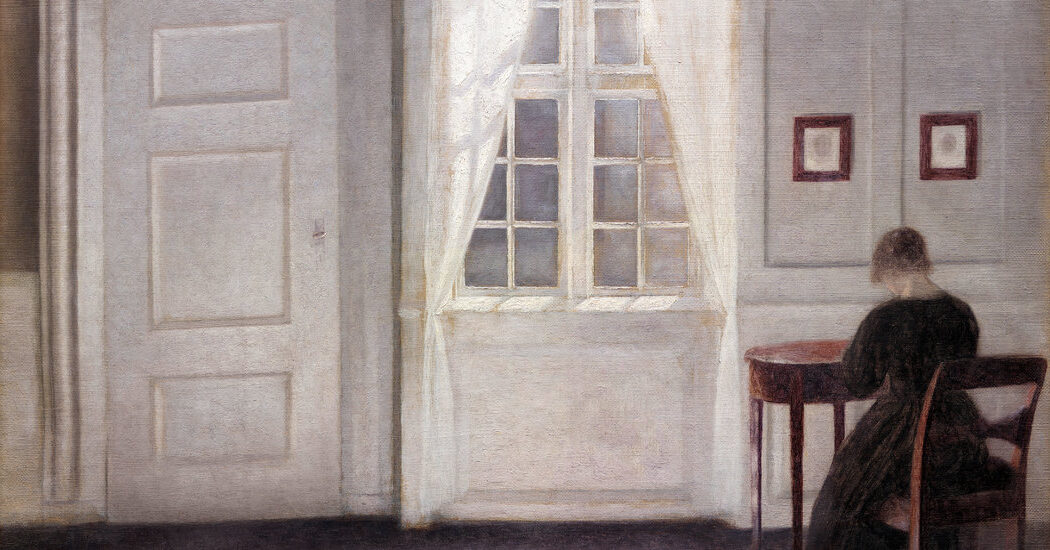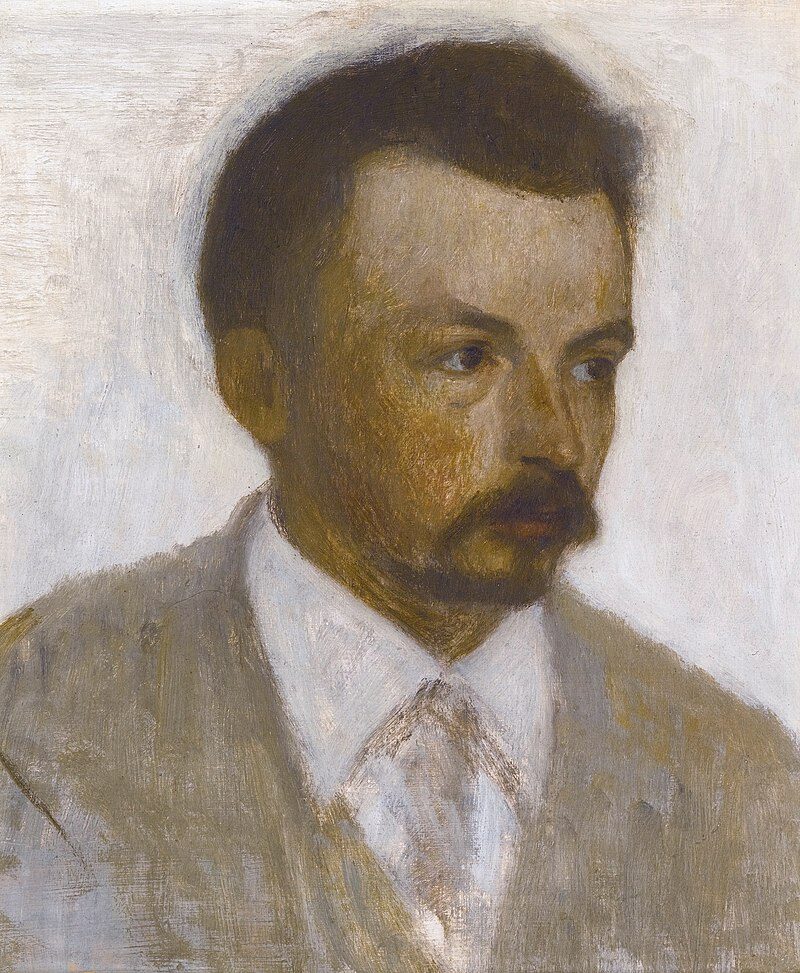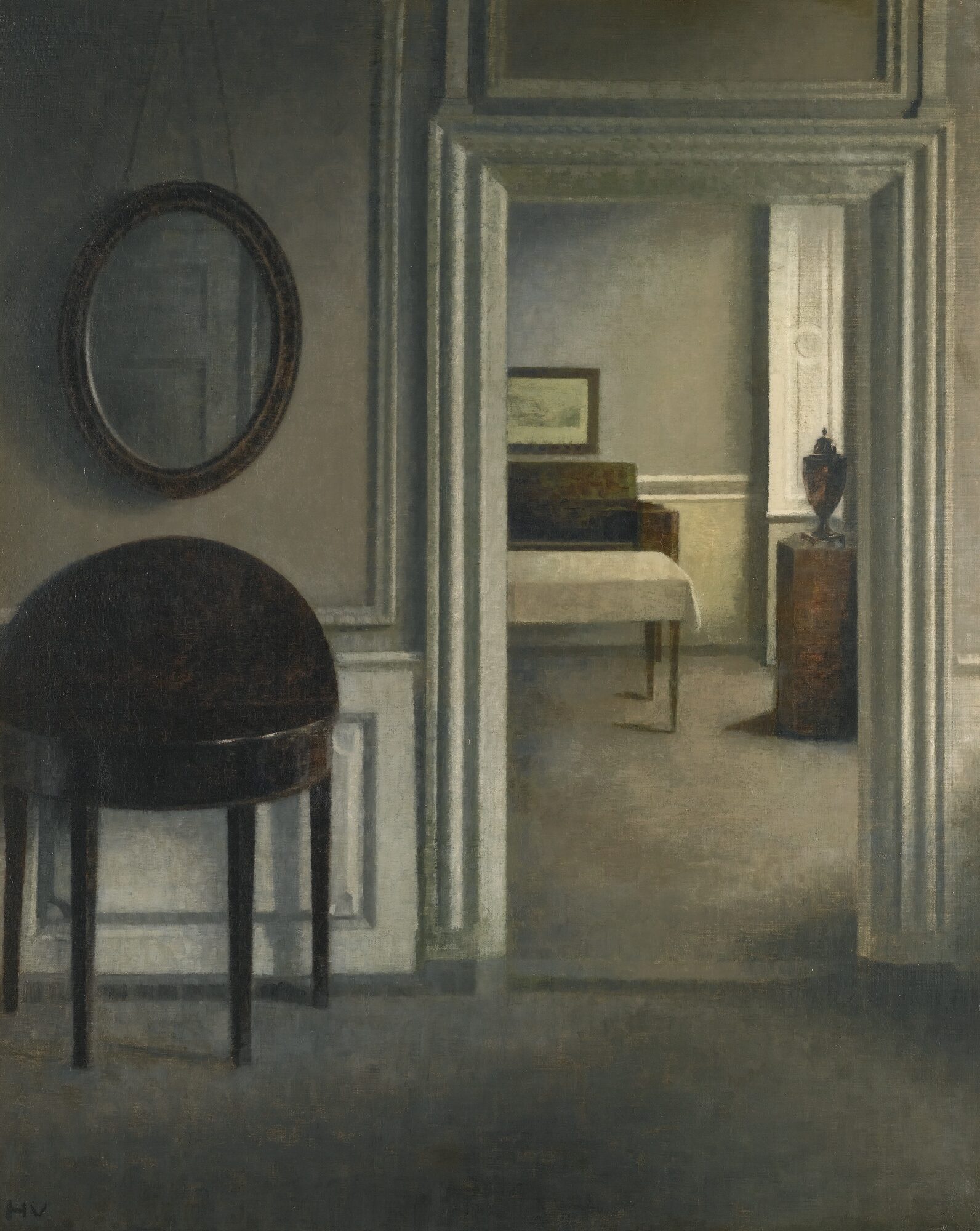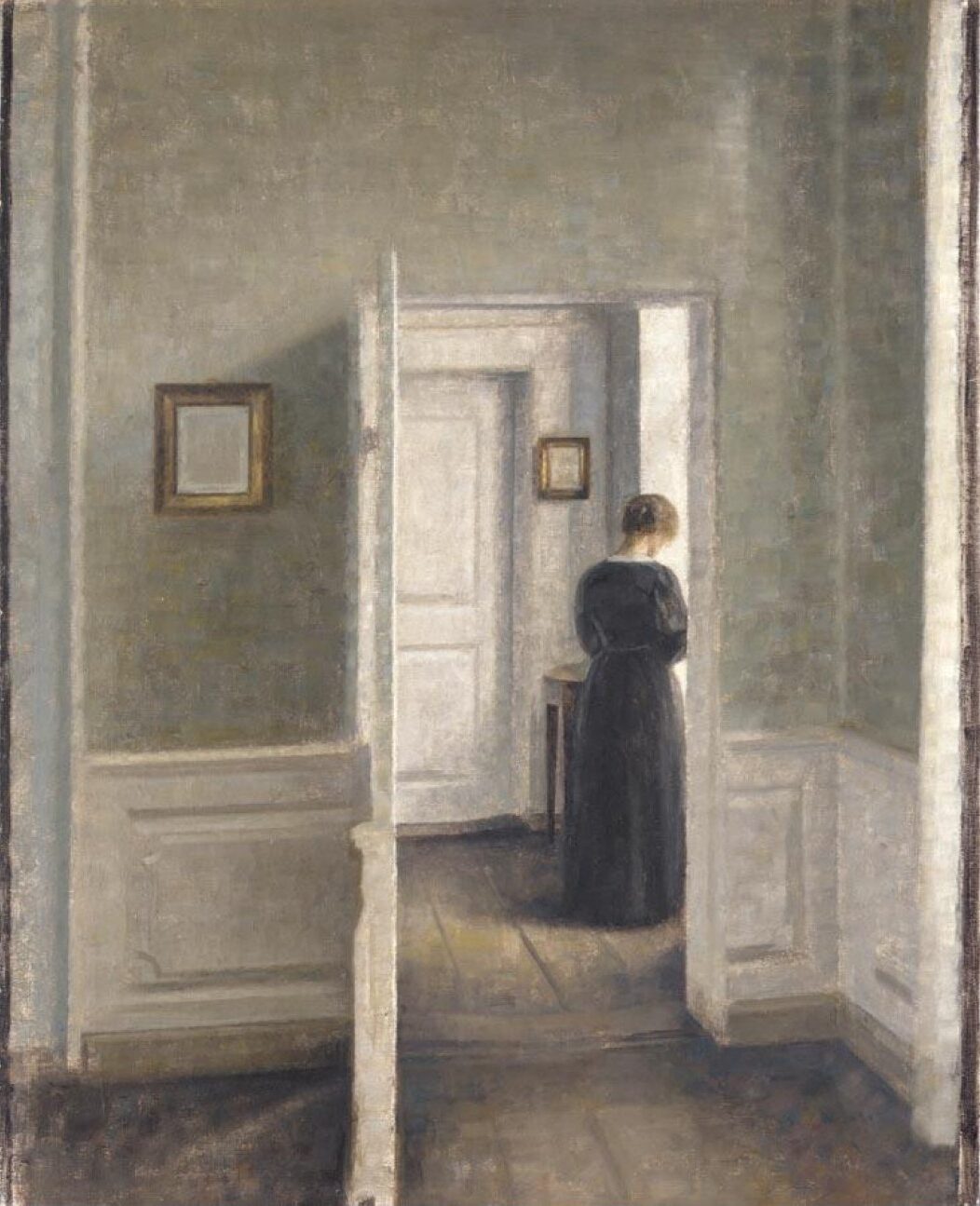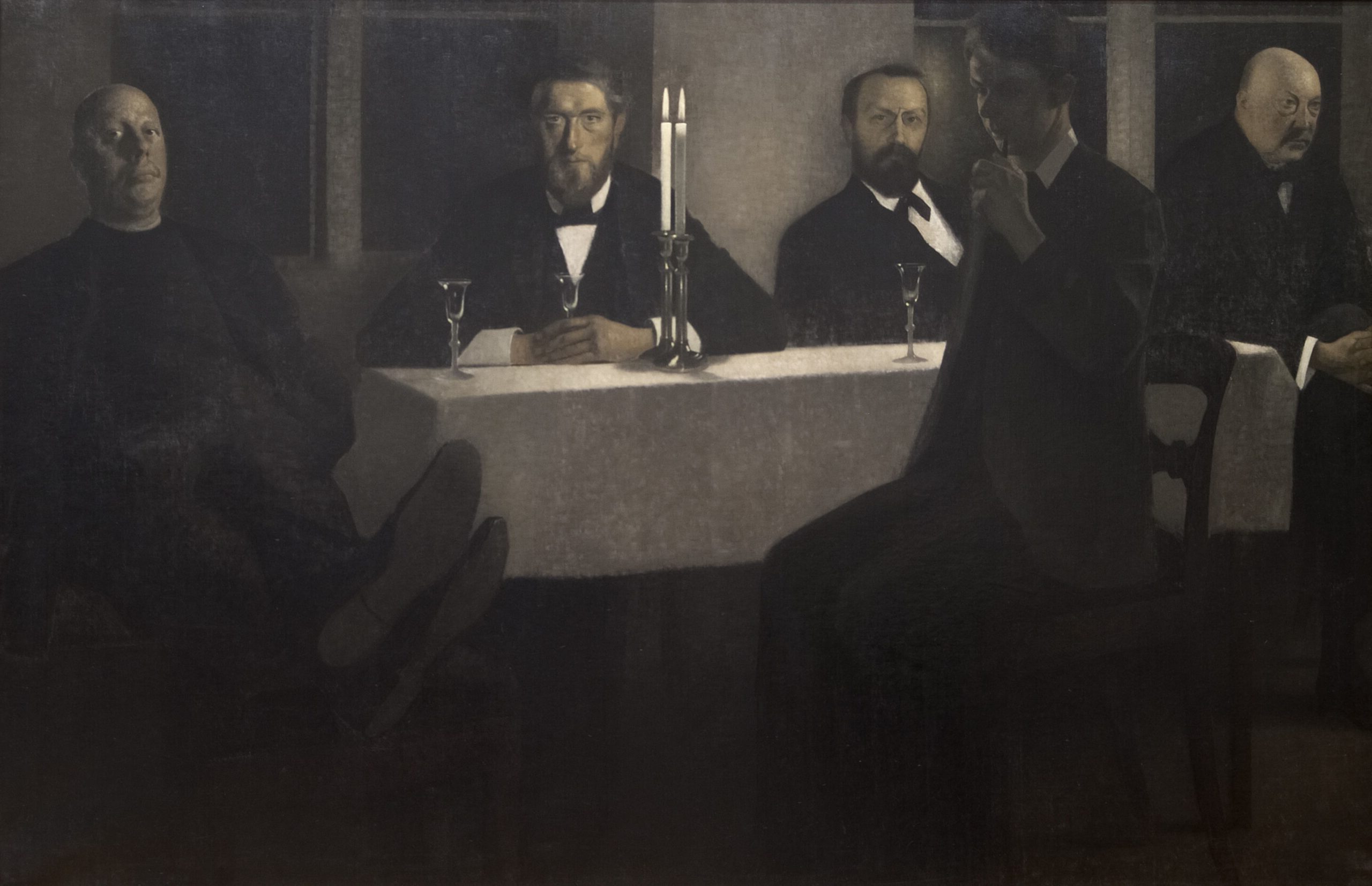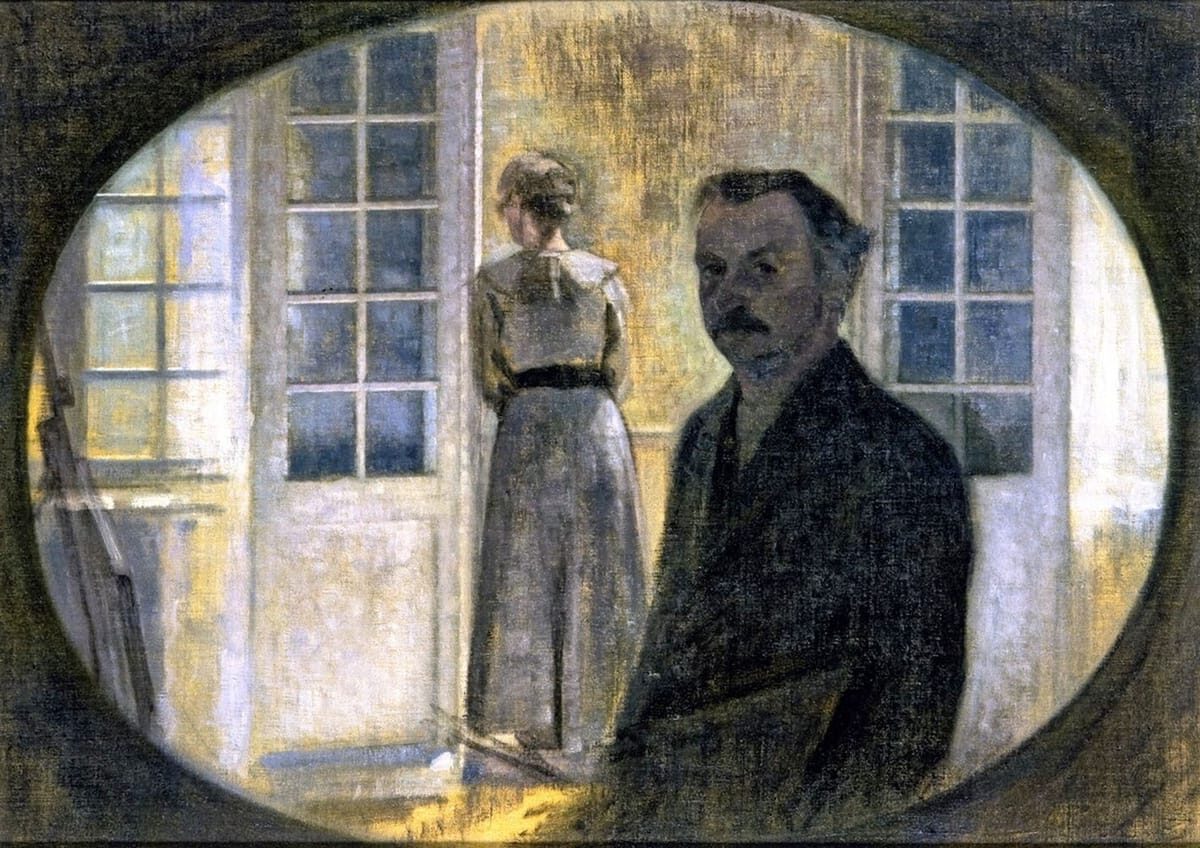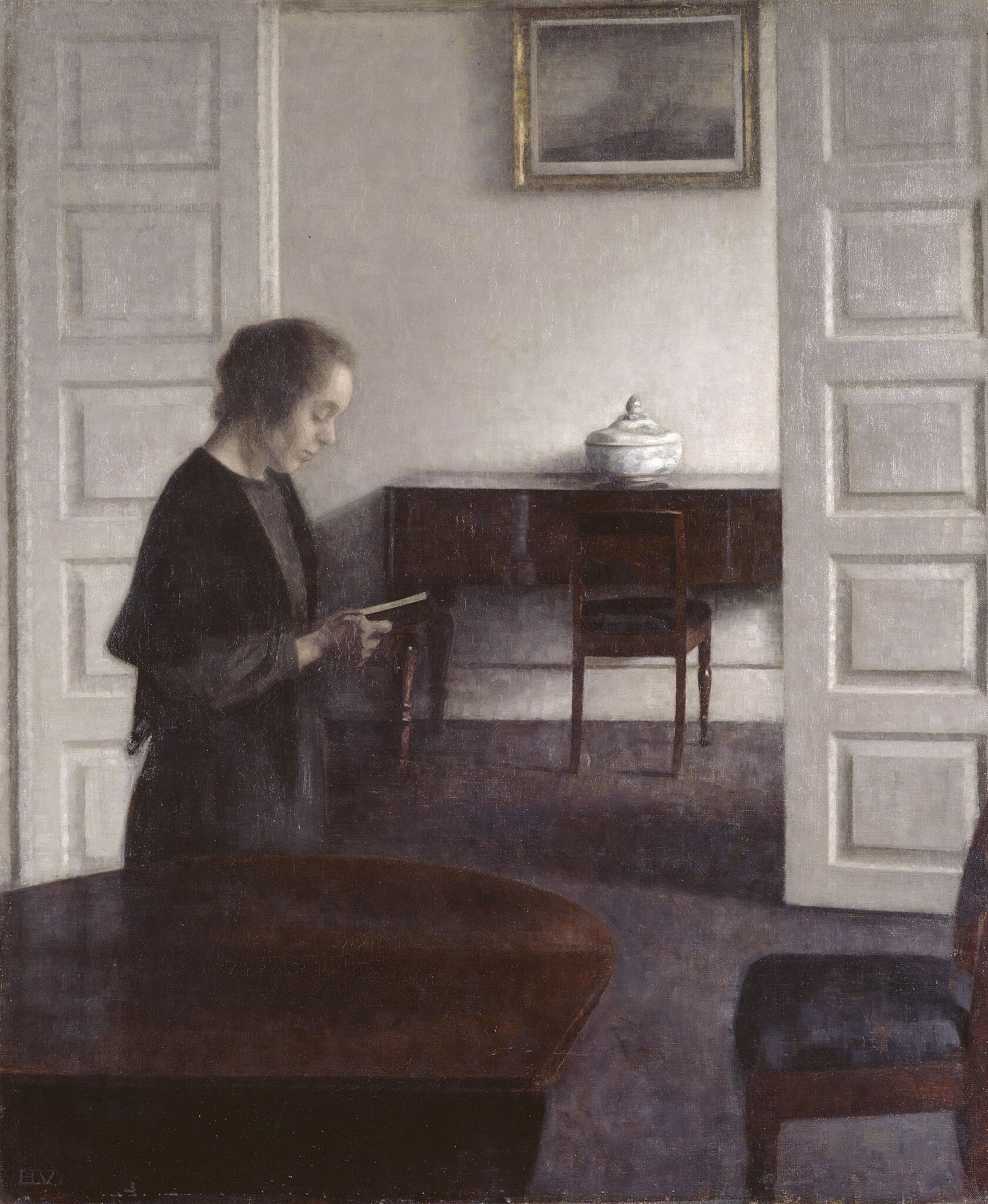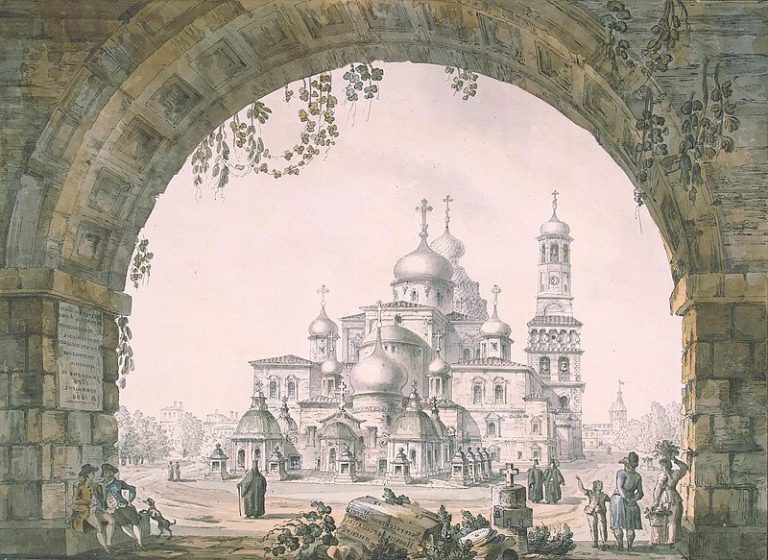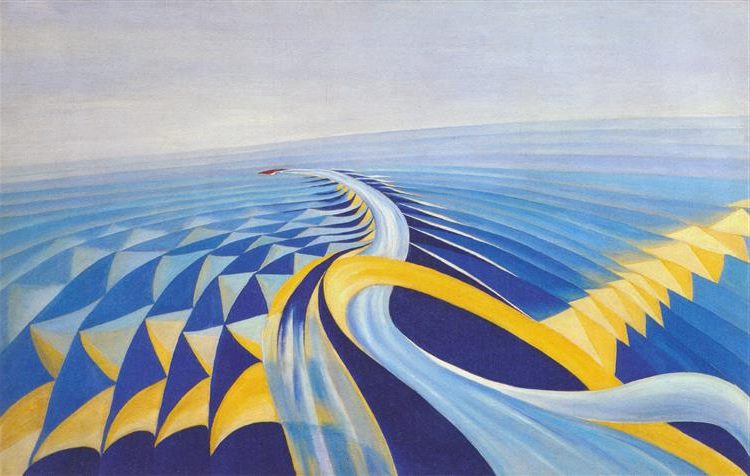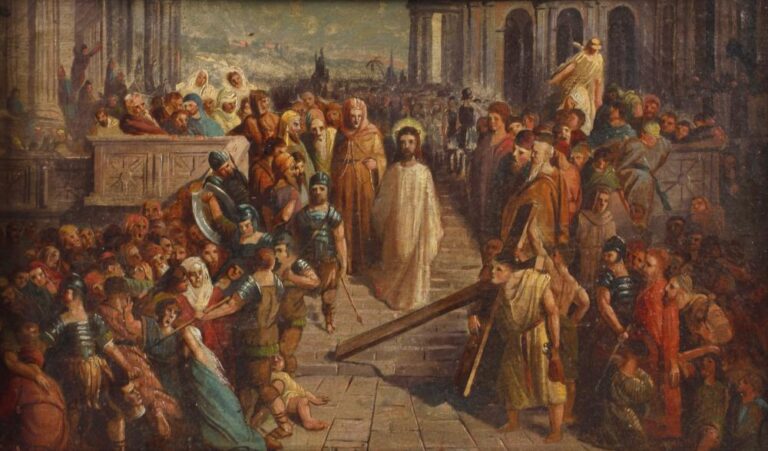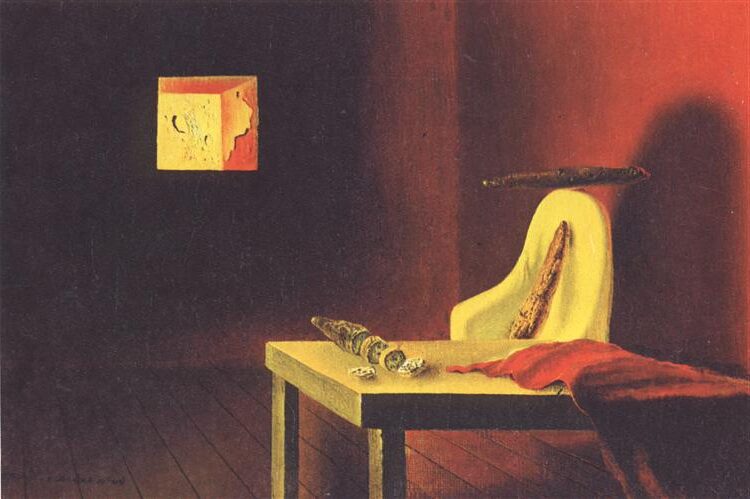Vilhelm Hammershøi Painter: Master of Danish Interior Scenes and Subtle Light
Born: May 15, 1864, Copenhagen, Denmark
Death: February 13, 1916, Copenhagen, Denmark
Art Movement: Symbolism, Impressionism
Nationalité : Danois
Teachers: Vilhelm Kyhn and Frederik Vermehren
Institution: Royal Danish Academy of Fine Arts
Vilhelm Hammershøi Painter: Master of Danish Interior Scenes and Subtle Light
Aperçu biographique
Vilhelm Hammershøi was one of Denmark’s most significant painters. His artwork is known for its subdued colors and quiet atmosphere. His life in Copenhagen and his relationship with his wife influenced his vision artistique.
Vie et éducation précoces
Vilhelm Hammershøi was born on May 15, 1864, in Copenhagen, Denmark. He grew up in the old quarter of the city, which would later feature prominently in his artwork.
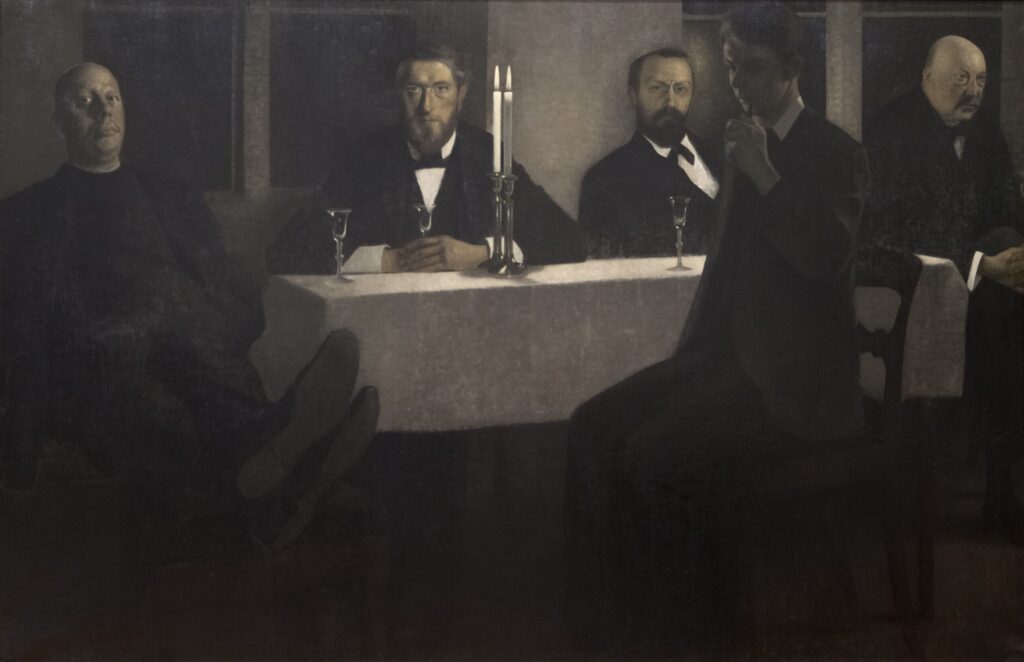
Five Portraits (1901) by Vilhelm Hammershøi
His formal artistic training began at the Royal Danish Academy of Fine Arts. He studied there from 1879 to 1884. During his time at the academy, he received instruction from the painter Niels Christian Kierkegaard, who helped shape his early artistic development.
Even as a student, Hammershøi showed signs of the distinctive style that would later define his work. His education at the academy provided him with technical skills while he developed his unique artistic vision.
Career Development
Hammershøi’s professional career as an artist began in the late 1880s. He quickly developed his signature style of muted colors, geometric composition, and quiet interiors.
The bulk of his productive career spanned from the late 1880s through 1905. During this period, he created many of his most recognized works featuring sparse interiors, often with a solitary figure seen from behind.
While his work received mixed reception initially, he gained recognition both in Denmark and internationally. His subdued palette and poetic approach to everyday scenes set him apart from his contemporaries.
His artistic output included portraits, landscapes, and architectural paintings, but he became most known for his interior scenes.
Personal Life and Ida Ilsted
In 1891, Hammershøi married Ida Ilsted, who became a central figure in both his personal life and artistic work. Ida appears in many of his paintings, typically shown with her back to the viewer or engaged in quiet domestic activities.
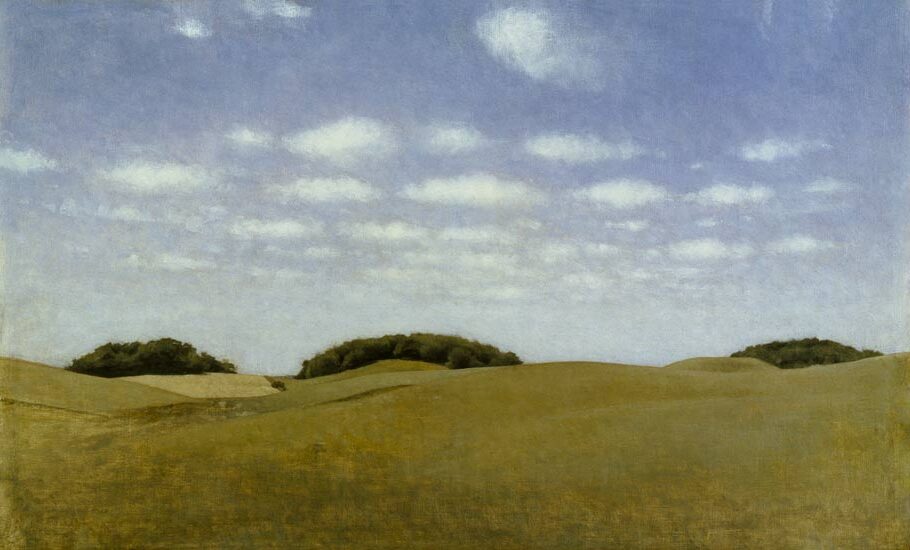
Landscape, From Lejre (1905) by Vilhelm Hammershøi
The couple lived in various apartments in Copenhagen’s old quarter. Their home at Strandgade 30 became the setting for many of Hammershøi’s most famous interior paintings, with Ida often serving as his model.
Their relationship seems to have been harmonious, with Ida supporting her husband’s artistic career. The quiet, contemplative nature of their domestic life is reflected in the serene quality of Hammershøi’s interior scenes.
Hammershøi continued to paint until shortly before his death on February 13, 1916, at the age of 51.
Style artistique et thèmes
Hammershøi’s art stands apart due to its distinctive restraint and atmospheric quality. His work features a unique combination of technical precision and emotional resonance, characterized by muted colors and careful arrangement of space.
Technique and Palette
Hammershøi worked primarily with oil on canvas, employing a remarkably limited palette dominated by grays, soft browns, blacks, and whites. He rarely used bright colors, especially in his mature work. His technique involved applying thin layers of paint with careful brushwork that created subtle transitions between tones.
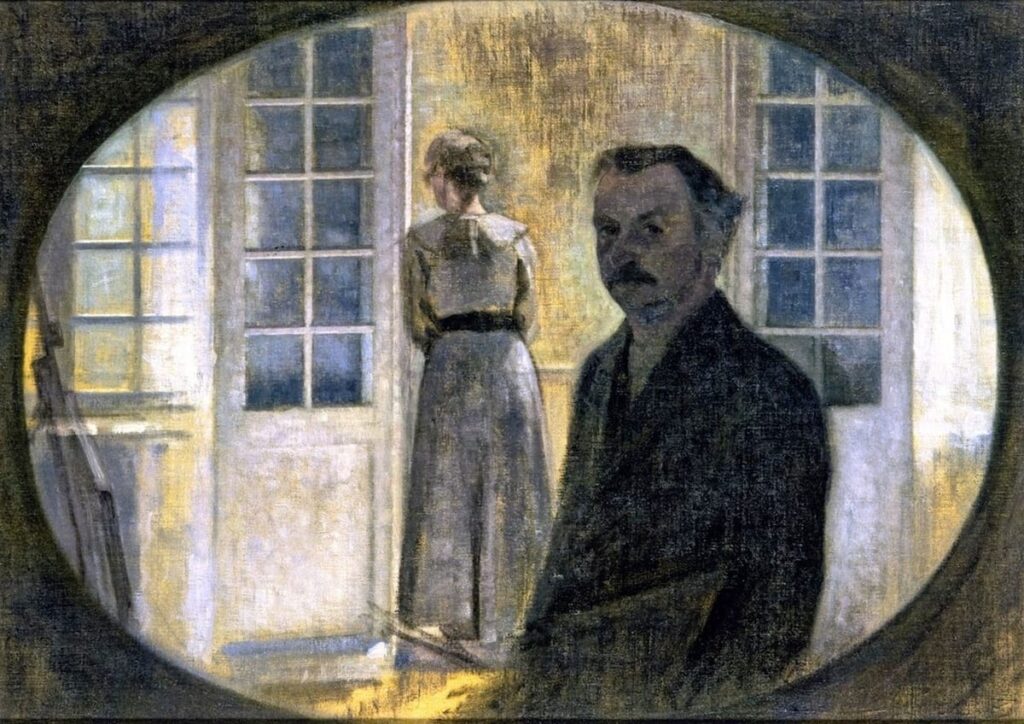
Double Portrait of the Artist and His Wife Seen Through a Mirror (1911)
The artist’s restrained color choices weren’t due to limitation but deliberate artistic vision. This approach allowed him to explore nuances of light and shadow with extraordinary sensitivity.
His paintings often feature a sense of stillness created through precise geometric composition and carefully controlled values. Even in his landscapes and architectural elements, Hammershøi maintained this disciplined approach to color and form.
Interiors and Light
The interior scenes of Strandgade 30, Hammershøi’s Copenhagen apartment, form his most celebrated works. These rooms appear nearly empty, with minimal furniture against white walls and plain wooden floors.
Light plays a crucial role in these compositions. Hammershøi captured sunlight filtering through windows, creating geometric patterns across walls and floors. The quality of this light—often northern, diffuse, and slightly melancholic—became a distinctive feature of his work.
Doors frequently appear in these interiors, sometimes closed, sometimes open to reveal another room. This creates a sense of mystery and profondeur psychologique beyond the apparent simplicity.
His interiors convey the quiet poetry of everyday life. They transform ordinary domestic spaces into contemplative environments that invite viewers to experience silence and stillness.
Portrait
Hammershøi’s portraits share the same contemplative quality as his interiors. His subjects typically appear absorbed in thought, often viewed from behind or in profile.

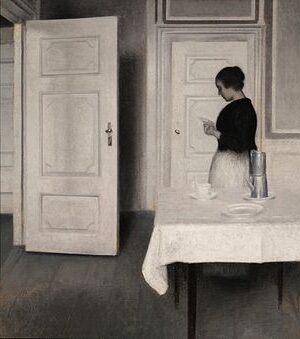
He avoided direct eye contact in many portraits, creating a sense of psychological distance. This approach gives his subjects a mysterious quality, as if they exist in their own inner world.
His portraiture techniques included subdued lighting and minimal backgrounds. These choices focused attention on the figure while maintaining the overall atmosphere of quiet restraint that defines his work.
Though less numerous than his interiors, Hammershøi’s portraits reveal his ability to capture human presence with subtle emotional depth.
Portraits of Ida
Hammershøi’s wife Ida appears frequently in his paintings, becoming one of his most important subjects. He often depicted her in the interiors of their apartment, dressed in black with her back to the viewer.
These portraits convey a sense of intimacy and distance simultaneously. Ida appears engaged in everyday activities—reading, sewing, or simply standing in a doorway—yet remains somewhat enigmatic.
The repeated portrayal of Ida creates a visual narrative throughout Hammershøi’s work. She becomes both a specific individual and a universal presence representing solitude and contemplation.
These paintings reveal the artist’s deep connection to his subject while maintaining his characteristic restraint.
Influence of European Artists
While distinctly individual, Hammershøi’s work shows awareness of broader European artistic movements. His subdued palette and psychological depth share qualities with contemporaries like Edvard Munch, though expressing a more restrained sensibility.
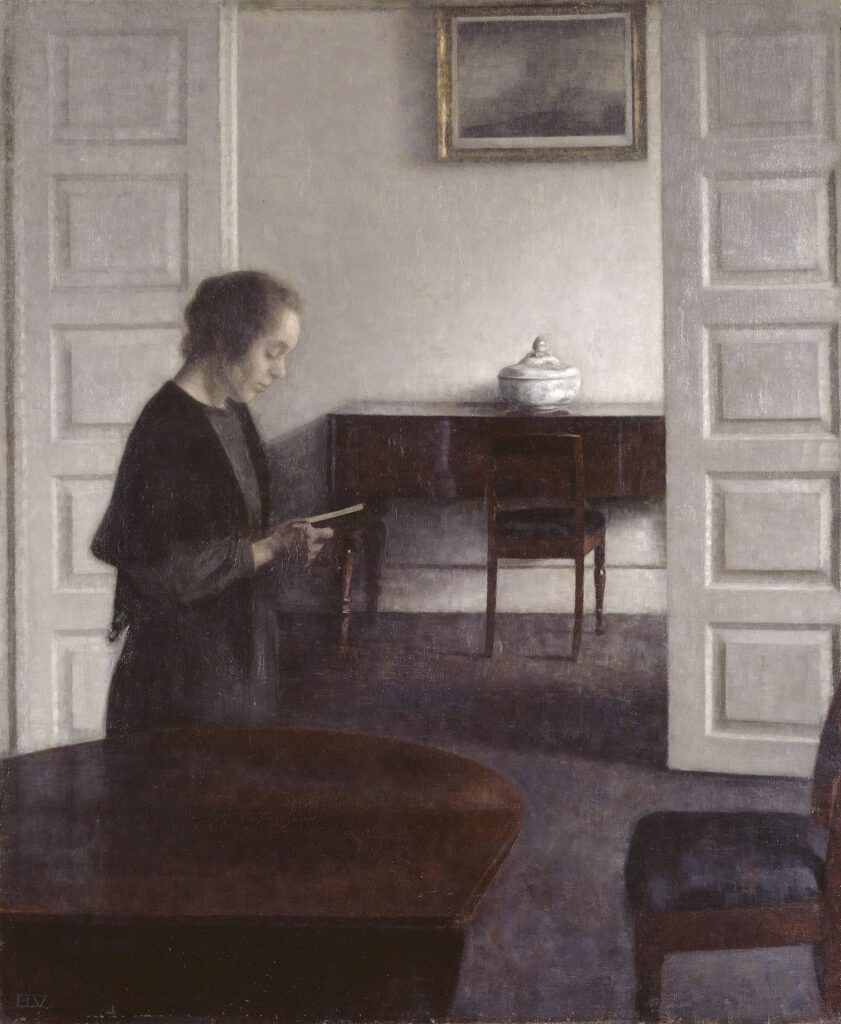
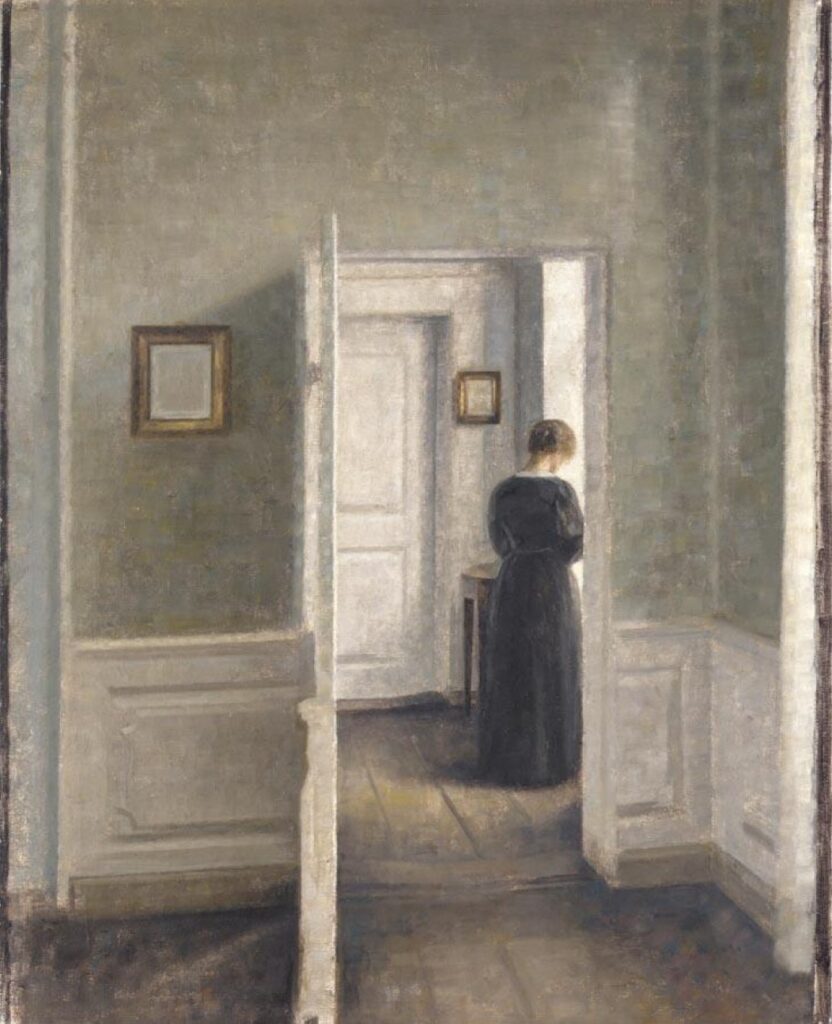
Hammershøi studied Dutch 17th-century painters, particularly Vermeer, whose influence appears in his treatment of interior light and domestic scenes. Unlike Vermeer’s detailed narratives, however, Hammershøi stripped away storytelling elements.
His work stands apart from more colorful contemporaries like Paul Gauguin, embracing quietude rather than exoticism. Later, American painter Edward Hopper would explore similar themes of isolation and contemplative interiors.
Hammershøi created a unique artistic voice that acknowledged European traditions while developing a distinctly Nordic sensibility focused on silence, light, and the poetry of ordinary spaces.
Public Reception and Legacy
Vilhelm Hammershøi’s work initially received mixed reviews during his lifetime, but has since gained significant recognition for its unique atmospheric qualities and maîtrise technique. His subtle, muted interiors and portraits have captivated audiences worldwide, establishing him as one of Denmark’s most important artistic figures.
Expositions et rétrospectives
Hammershøi’s work has been celebrated through numerous major exhibitions worldwide. The Guggenheim Museum hosted “Vilhelm Hammershøi: Danish Painter of Solitude and Light,” the only American venue for this significant retrospective that brought his quiet masterpieces to new audiences.
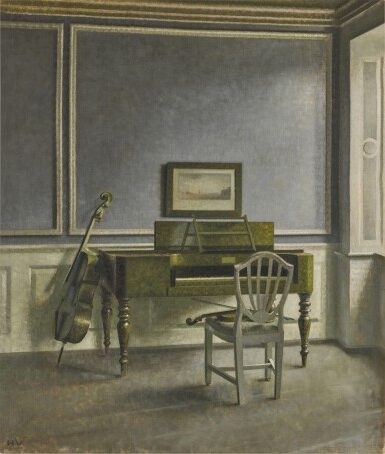
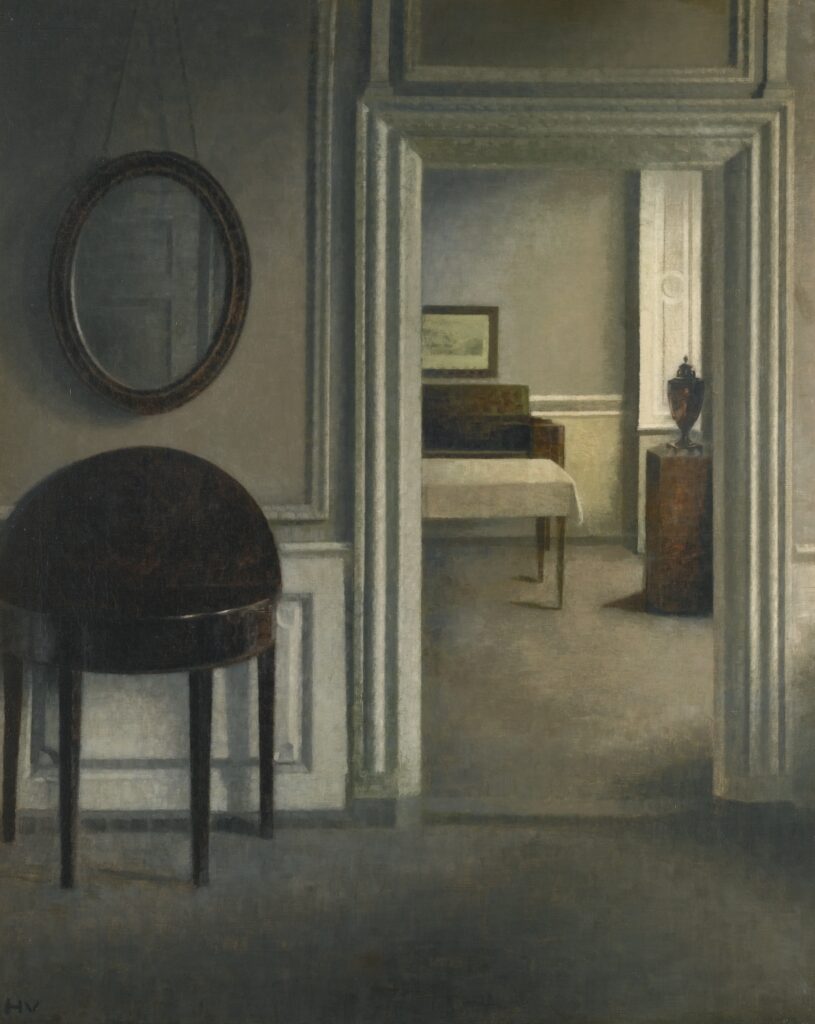
The exhibition “Vilhelm Hammershøi: The Poetry of Silence” at the Royal Academy of Art in London drew substantial crowds, highlighting his unique approach to interior spaces.
The Musée d’Orsay in Paris and the National Gallery in London have both featured his works prominently. In 2019, a major retrospective at Ordrupgaard in Denmark reassessed his contribution to Scandinavian art, displaying his famous interiors with their characteristic desaturated yellows and muted tones.
British actor and writer Michael Palin helped introduce Hammershøi to wider audiences through his documentary work, bringing fresh attention to the painter’s subtle genius.
Collections and Recognitions
Hammershøi’s paintings are now held in prestigious collections worldwide. The largest collection resides at the Statens Museum for Kunst (SMK) in Copenhagen, which has loaned works to international exhibitions at the Frye Art Museum and other venues.
His “Five Portraits” series has received particular acclaim for its psychological depth and technical brilliance. Art historians have increasingly recognized the innovative qualities of his work, particularly his masterful use of sunlight as it falls across sparse interiors.
Comprehensive catalogue raisonnés have documented his complete works, allowing scholars and enthusiasts to study his artistic development. Auction prices for his paintings have risen dramatically in recent decades, with some works fetching millions at international sales.
Museums regularly feature his paintings in special installations that emphasize the contemplative nature of his vision.
Influence and Comparisons
Hammershøi’s distinctive style has influenced generations of artists. His minimalist approach to interior spaces predated modern minimalism by decades, establishing him as a visionary who worked against prevailing trends of his era.
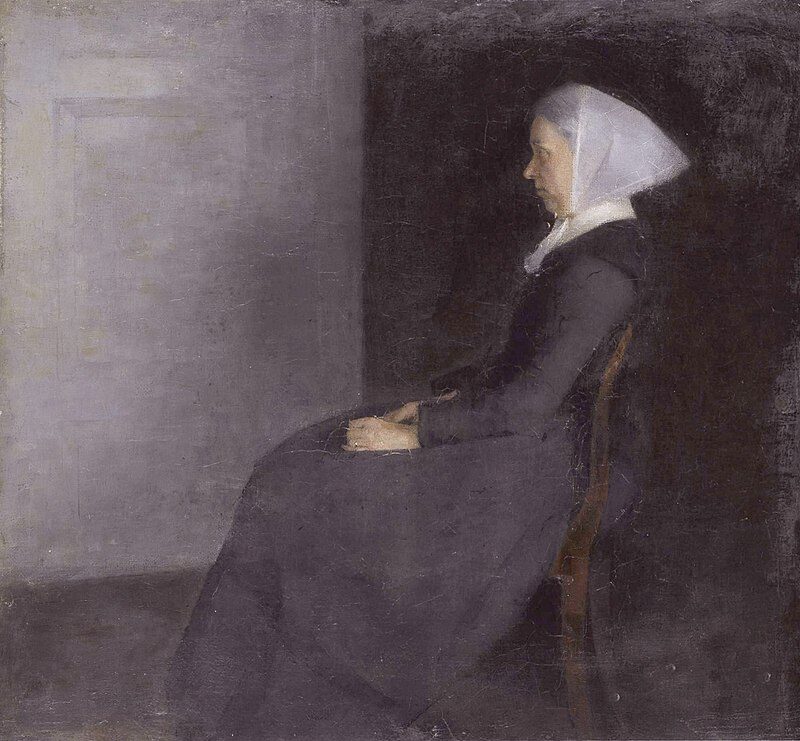
Frederikke Hammershøi, the Artist’s Mother (1886)
Critics often compare his work to Johannes Vermeer for his masterful handling of light, though Hammershøi’s palette is distinctly more restrained. Unlike his contemporary Pierre-Auguste Renoir, who embraced vibrant colors, Hammershøi pursued a deliberately limited tonal range.
The Camden School painters in Britain showed similar interests in domestic interiors, though with different aesthetic approaches. Modern photographers and filmmakers cite his compositions as inspirations for their framing and lighting techniques.
His focus on silence and stillness has proven particularly relevant to contemporary audiences seeking contemplative experiences in art. This quality has made his work increasingly popular in a fast-paced digital age, where his quiet interiors offer visual respite and emotional depth.
Questions fréquemment posées
Vilhelm Hammershøi’s distinctive artistic style generated considerable interest from les amateurs d'art worldwide. His quiet interiors and subdued color palette raised questions about his techniques, influences, and place in histoire de l'art.
What period did Vilhelm Hammershøi’s art primarily represent?
Vilhelm Hammershøi produced most of his significant works during the late 19th and early 20th centuries. He was active from the late 1880s through 1905, during a time when various mouvements artistiques were emerging across Europe.
Born in 1864 in Copenhagen, Hammershøi studied at the Royal Danish Academy of Fine Arts at a young age. His artistic career spanned from his education in the 1880s until his death in 1916.
His work bridged the transition between 19th-century traditions and early modernism, though his style remained distinctively his own rather than aligning with any particular movement.
How has Vilhelm Hammershøi influenced modern art?
Hammershøi’s minimalist approach to interior scenes has influenced contemporary artists interested in exploring quietude and empty space. His subdued color palette and focus on light effects anticipated aspects of later minimalism.
Many modern photographers cite Hammershøi’s compositions and lighting techniques as inspirational to their work. His ability to create atmosphere through simplified compositions continues to resonate with contemporary artists.
The emotional quality of isolation in his paintings has influenced artists exploring themes of solitude and introspection in modern society.
In which museums can one find Vilhelm Hammershøi’s works displayed?
The largest collection of Hammershøi’s works is housed in Danish museums, particularly in Copenhagen where he lived and worked. The National Gallery of Denmark (Statens Museum for Kunst) maintains a significant collection of his paintings.
International institutions including the Metropolitan Museum of Art in New York, the Tate in London, and the Musée d’Orsay in Paris display important works by Hammershøi.
Private collections worldwide also contain notable examples of his art, occasionally loaned for special exhibitions celebrating Danish or Scandinavian art.
What are the defining characteristics of Vilhelm Hammershøi’s painting style?
Hammershøi’s style is immediately recognizable for its muted color palette dominated by grays, soft browns, and whites. His paintings feature remarkable control of light, creating subtle variations and atmospheric effects.
Interior scenes form the core of his work, often depicting sparse rooms with minimal furniture and sometimes a solitary figure, frequently his wife Ida seen from behind. These compositions convey a sense of stillness and melancholy.
His technical approach emphasized precise brushwork and careful attention to architectural details while maintaining an overall sense of simplicity and restraint.
Who were some contemporaries of Vilhelm Hammershøi within the art world?
Hammershøi’s contemporaries included other prominent Danish painters such as Peder Severin Krøyer and Michael Ancher, though his style differed substantially from theirs. Unlike many of his Danish colleagues, Hammershøi avoided naturalistic scenes of everyday life.
In the broader European context, he worked during the same period as Symbolists like Edvard Munch and post-impressionists such as Georges Seurat, though Hammershøi developed his distinct aesthetic approach.
James McNeill Whistler, the American painter working primarily in Europe, shared some stylistic similarities with Hammershøi in terms of tonal subtlety and compositional refinement.
What critical acclaim or awards did Vilhelm Hammershøi receive for his artwork?
In 1889, Hammershøi presented four oil paintings at the Paris World Exhibition. This marked an important early international recognition of his work. His participation in international exhibitions helped establish his reputation beyond Denmark.
Despite his now-recognized importance, Hammershøi experienced mixed critical reception during his lifetime. Some critics praised his unique vision. However, others found his work too reserved and lacking emotion.
After his death in 1916, his reputation gradually grew. Major retrospectives in recent decades firmly established him as one of Denmark’s most significant painters and an important figure in European art history.

